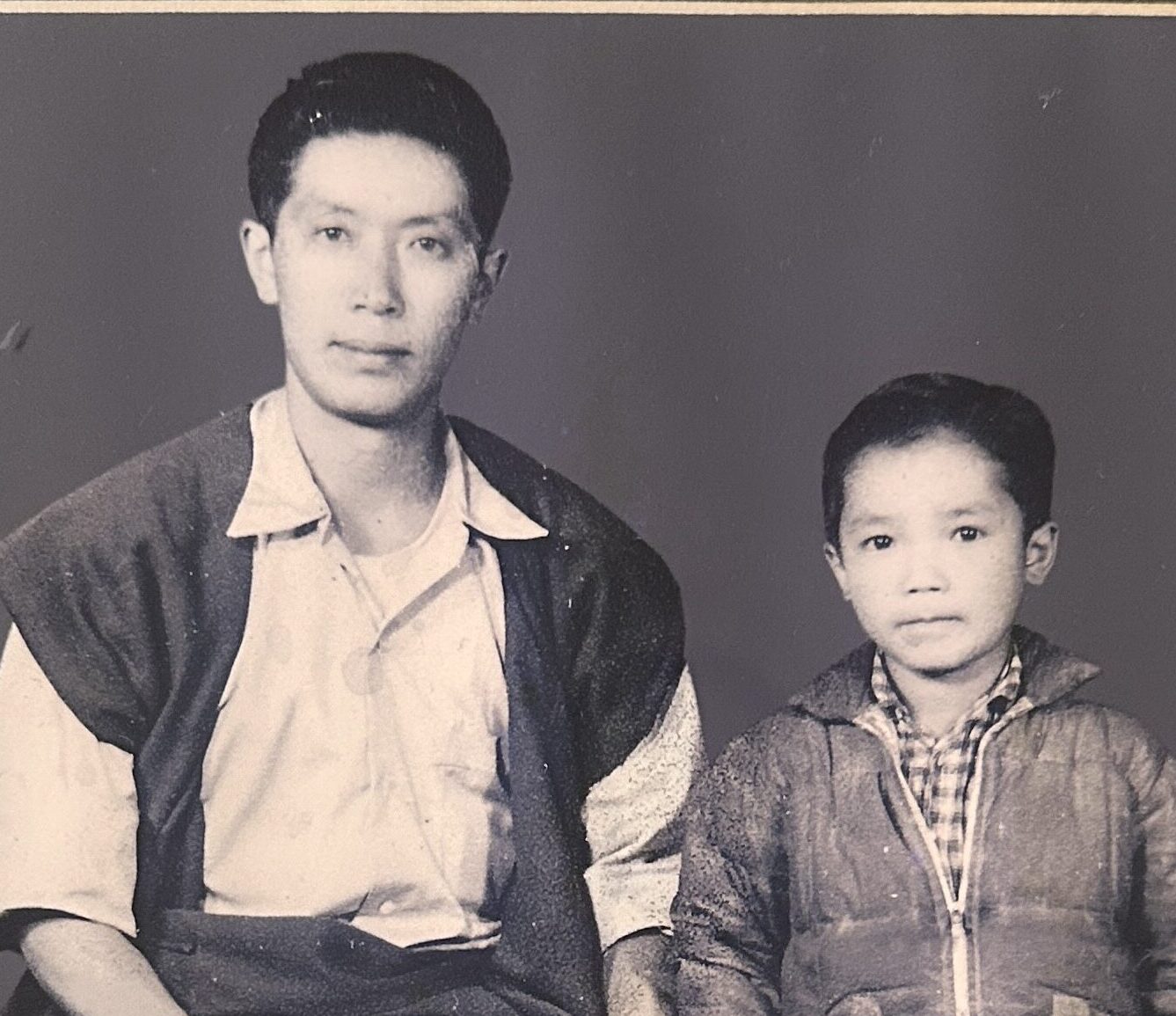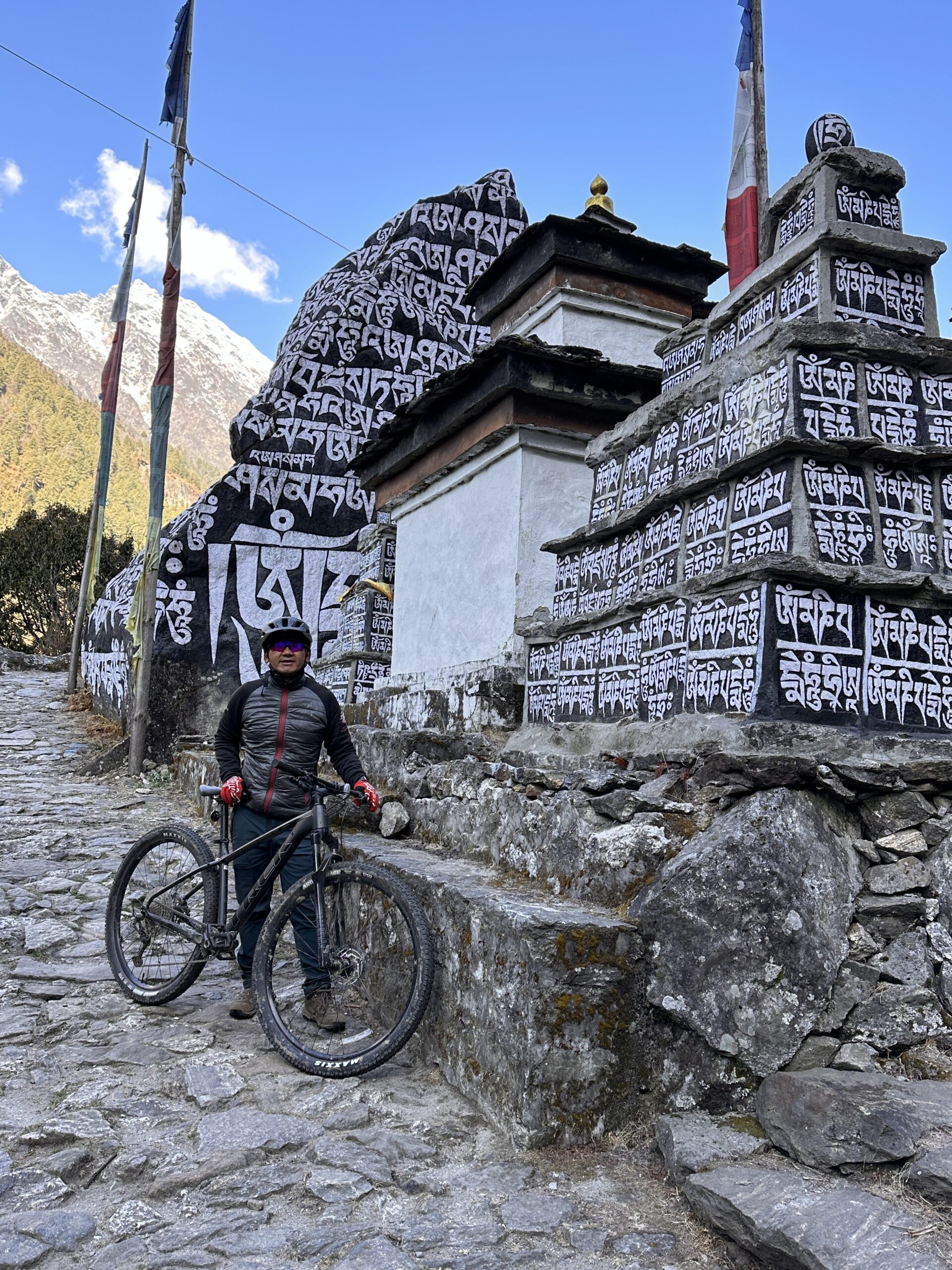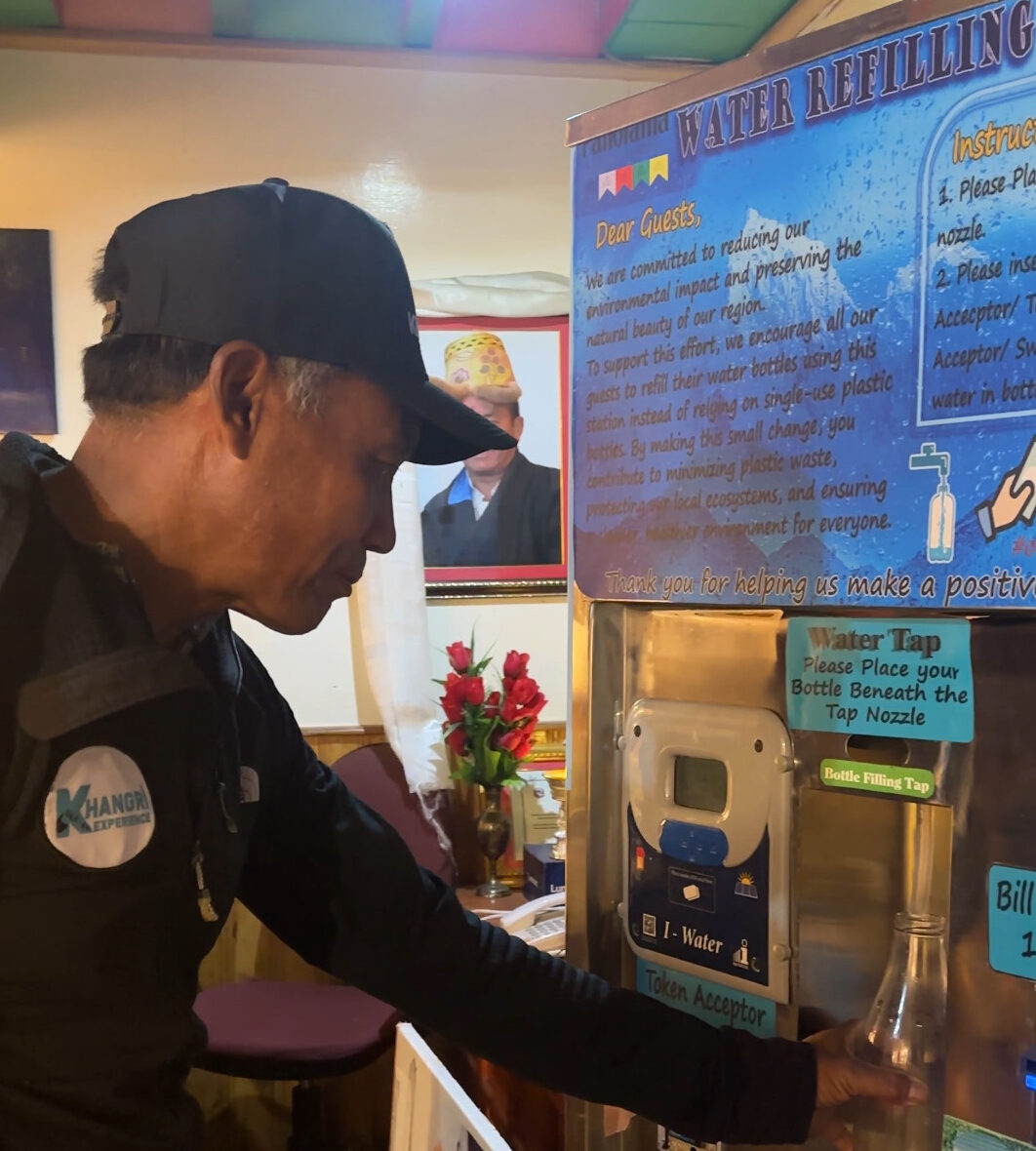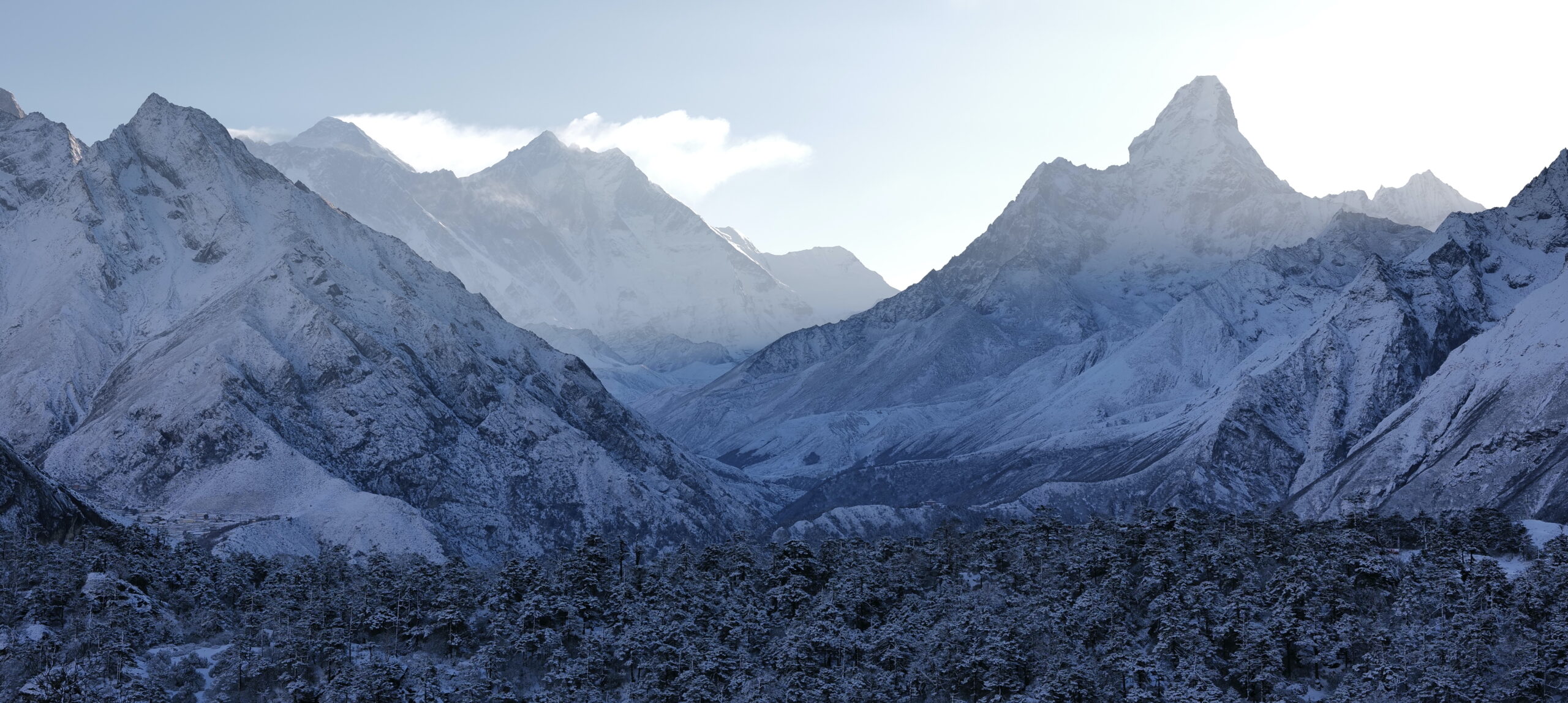
Meet Kancha Sherpa
Meet Kancha Sherpa
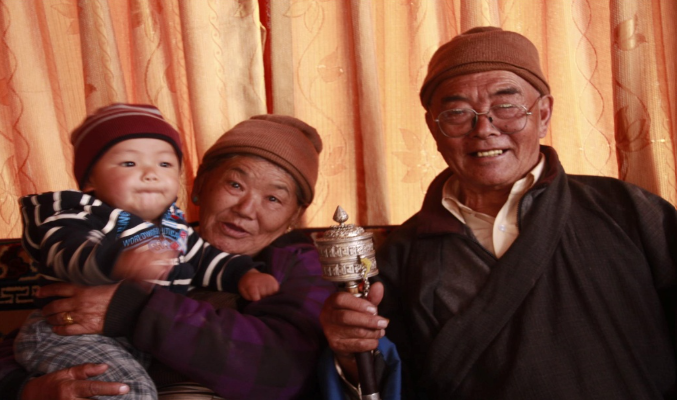
A Member of the successful 1953 Expedition when Sir Edmund Hillary and Tenzing Norgay ascended and conquered the highest peak in the world for the first time.
Kancha Sherpa is very enthusiastic, healthy and hearty while talking about old days. kancha has sugar problem and finds it very weird to add sugar-free sugar in his cup of tea. Kancha, a native of Namche Bazar loves his home and has been living there most of his life, except three months every winter season he descends to Kathmandu to spend time with his daughter and her family.
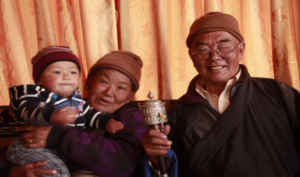
smile with his beloved wife
and great grand son
At the age of 19 / 20, Kancha Sherpa along with his friends left Namche bazaar in search of work. They were inspired by locals returning from a place called Darjeeling, India with trunks full of nice clothes and money.
Kancha recalls that one of his friends carried Rs. 15, the other Rs. 20 and himself a bag of powder sugar since he had no money. It took them three days to reach Darjeeling. While on their journey, they survived on makkai (pop corns) and Chang (local whisky). They were oblivious of the outside world, since this was their first ever attempt to leave their hometown. They were just three teenagers who left home in search of better weather and clothes.
In Darjeeling, he met his father’s friend who offered them food and taught them how to wash clothes with soap. They never had to wash clothes in Namche since it was so cold. After months of running errands for his father’s friend Kancha agreed to join an expedition of men who were going to climb Mt. Everest for a daily labor charge of Rs. 5 which was then paid in coins. Money was not available in the form of notes.
There is a grin on Kancha’s face as he tells us these stories. He says that Bhaktapur had few houses one could count them on his hands and that rarely were one or two old trucks running. It was almost empty. They stayed in Bhaktapur for about two weeks collecting stuff that arrived from Britain and repacking. He remembers that there were a lot of things that was flown in from Britain especially because no one had ever climbed the Everest before and so no one really had a definite clue of what all was required and necessary. Twelve hundred porters were hired to carry the stuff from Bhaktapur to Namche. The expedition also used yaks to carry the loads once in
Khumbu.
Thirty-five high altitude sherpas including Tenzing Norgay and seventeen British (army and officers) had come to join this historical expedition. Kancha says that he had never seen such tall men before and it was probably the first time, for many Nepalese back then, to see any foreigners (Americans). He recalls those days they heard of the word American but had no idea what tourists were? These groups of men were then divided into three groups of four hundred men each. Money had to be escorted in the form of coins in twenty-five boxes, for which His Majesty’s Government of Nepal sent five policemen for security purposes.
On the first day from Everest Base camp, they had to cross Khumbu ice fall, a daunting iron gate to Mount Everest. It was all hard manual labor says Kancha timely joking about the modern high technology gears and boots that climbers and trekkers use today and sometimes even including the guides and porters. It was difficult, they had to cut tree logs to make ladders and build a bridge.
Almost twenty trees were chopped. In due course of climbing, many Sherpa’s died in this ice fall area, it was but natural for the Sherpa wives to ask them to stop climbing and risking their lives.
The expedition was tough to earn a living; Kancha says it was pretty strange to see so many Foreigners all at once, to see their enthusiasm and zeal to climb the Everest. “It was beyond my comprehension”, says Kancha.
During the climb, the team was waiting for the expert Tenzing Norgay who was guiding Mr. Edmund Hillary. One morning, they were told that their ascend was a success over a walkie talkie. Everyone at the camp was happy. Then a helicopter came and took both Hillary and Tenzing away. It was an expedition planned for three months but completed in merely forty-five days.
When asked about what memories he held of Tenzing Norgay, Kancha said that he was a very smiling and cheerful person. He would help and guide the new sherpas. He said these are fond memories.
Kancha Sherpa’s last expedition was in 1973 with people from thirteen countries. He deeply believes in asking for a Mountain God’s blessings before any climb or even a successful trek. He credits his good health to Namche’s pollution free air and water that needs no filtering. He spent most of his life beneath the mountains with people from the mountains. He says those days life was simple. People were extremely nice to each other. He doesn’t remember being angry or having a grudge against anybody. He remembers fighting with his friends and apologizing to them the next day and forgetting about it like no big deal.
But Kancha is worried about many things now. He worries that now there is very little ice/ snow left on the mountain. He worries that the future generation might not be able to enjoy what his generation did many years back – The pure beauty of nature. He worries that with Technological advancement and modernization, people have become complex and more angry and frustrated. He
doesn’t like Kathmandu too much, he says the traffic and the number of people everywhere scares him.
Posted By: Shraddha Rana
Follow her on WordPress


